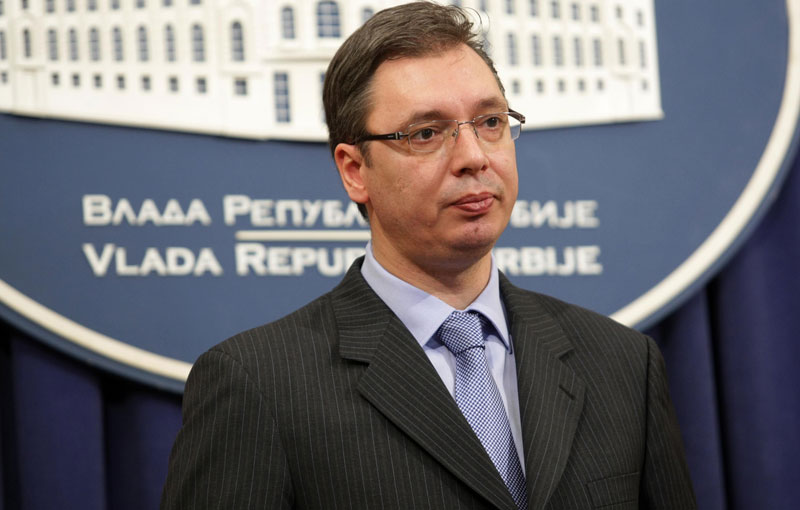Poland/Ukraine – The beginning of the year in Ukraine was marked by Russian bombings, but also many commemorations of Stepan Bandera, a particularly controversial historical figure. Such commemorations go down badly with neighbouring Poland, where people still remember the horrendous ethnic cleansing of the Poles of Galicia and Volhynia during the Second World War, which was associated with Bandera.
A painful scar
1 January 2023 was the 114th anniversary of Stepan Bandera’s birth. For the past decade, parades, marches, and commemorations have been held throughout Ukraine on the first day of each year, especially in the country’s west, to celebrate this major figure of Ukrainian nationalism.
It is a fact that, along with Roman Shukhevych, Stepan Bandera is the father of Ukrainian independence, and thus a key figure for patriotic Ukrainians, especially in the time of the terrible ordeal resulting from Russia’s all-out war unleashed on 24 February 2022, with some Ukrainian territories having been annexed by the Russian Federation.
But the name of Bandera is not associated only with Ukraine’s independence and anti-communist patriotism. Until World War II, the western part of today’s Ukraine – the regions of Eastern Galicia and Volhynia – were multi-ethnic, multi-cultural, and multi-confessional. They belonged to the Polish-Lithuanian Commonwealth from the 14th century to the late 18th century, before becoming part of the Russian Empire. Between the two world wars, after Poland had won back its independence from Russia, the western part of these regions belonged to the Second Polish Republic. For centuries, Poles, Germans, Jews, Armenians, Greeks, and of course Ruthenians – the ancestors of modern-day Ukrainians – had lived there.
According to a 1931 census, Ukrainians accounted for 64% of Volhynia’s population, alongside 15.6% Poles, 10% Jews, 2.3% Germans, and other smaller minorities (Czechs, Slovaks, Belarusians, etc.).
In the 1930s, the Organisation of Ukrainian Nationalists (OUN), created in 1929, developed a doctrine aimed at resisting Polish and Soviet rule in order to achieve independence, the two historical enemies designated by the OUN being the Soviet Union (Russia) and Poland.
Violence and terrorism were an integral part of the OUN’s doctrine, and Poles living in Galicia and Volhynia were considered an enemy presence on Ukrainian soil. During World War II, Ukrainian nationalists seized the opportunity to gain their much desired independence from both Poland and the USSR. In late 1942, the Ukrainian Insurgent Army (UPA) was formed.
By then, Germany was seen as an ally in freeing Ukraine from Soviet domination, leading Ukrainian nationalists to collaborate with Hitler. The third clause of the Act of restoration of the Ukrainian state, passed on 30 June 1941 (eight days after the start of the German invasion of the USSR, which included by then the Ukrainian-inhabited territories that had been part of the Second Polish Republic), leaves no doubt about this:
“3/ The newly formed Ukrainian state will work closely with the National-Socialist Greater Germany, under the leadership of its leader Adolf Hitler, which is forming a new order in Europe and the world and is helping the Ukrainian People to free itself from Muscovite occupation. (…)”
They were of course quickly disappointed, Hitler having other projects for the Ukrainian territory that were not compatible with an independent Ukraine.
Nonetheless, Ukraine had its own SS division, the “SS Galizien”, which actively participated in the massacre of the Jews of Galicia. In Volhynia and Eastern Galicia, it was then the Poles who were targeted, this time by the Ukrainian nationalists on their own initiative.
The following is an excerpt from the order delivered by the OUN on 2 February 1944 to its members:
“Liquidate all Polish traces. Destroy all walls in the Catholic Church and other Polish prayer houses. Destroy orchards and trees in the courtyards so that there will be no trace that someone lived there… Pay attention to the fact that when something remains that is Polish, then the Poles will have pretensions to our land.”
In the years 1943–45, tens of thousands of people, including many women and children, were massacred by Ukrainian nationalists with unspeakable brutality. Rape was also used as a weapon of terror, similarly to how the Red Army behaved. In all, it is estimated that some 100,000 Polish victims were butchered by Ukrainian nationalists during World War II.
An incomprehensible provocation…
In spite of this difficult past, and in spite of the exceptional and unwavering support given by Poland to Ukraine in its current conflict with Russia, these commemorations continue with the authorities’ support. According to Ukrainian researchers from Rating Group, 74% of Ukrainians have a favourable opinion of Stepan Bandera.
Also on 1 January, the Rada (the Ukrainian parliament) posted on Twitter a message commemorating Stepan Bandera, where General Valerii Zaluzhnyi, commander-in-chief of the Ukrainian armed forces, appeared smiling on a photo with a portrait of Stepan Bandera, all accompanied by a quote from Bandera: “The complete and final victory of Ukrainian nationalism will come when the Russian empire ceases to exist.”
In Ukraine, it is argued that Bandera neither supported nor condemned the ethnic cleansing and that, being imprisoned during most of the war, he was not directly responsible for the massacres. However, under fire, especially from Poland, the tweet was soon deleted.
On the Polish side, the glorification of Bandera does not go down well. In 2016, the lower house of the Polish parliament, the Sejm, passed a resolution acknowledging the genocidal nature of the Volhynia massacres. Thus, the Polish Ministry of Foreign Affairs has officially protested Ukraine’s latest Bandera commemorations.
Kacper Płażyński, the chairman of the Sejm’s EU Affairs Committee and a member of the ruling PiS party, wrote on Twitter on 1 January, in reaction to those commemorations: “Bandera was the murderer responsible for the genocide of Poles in 1943–44, when UPA troops killed in a horrific way about 100,000 Polish civilians. It is extremely surprising that at a time when our Ukrainian friends themselves are fighting similar beasts, they continue to glorify that one.”
On 2 January, Polish Prime Minister Mateusz Morawiecki declared his intention to tell his Ukrainian counterpart Denys Shmyhal that it is unacceptable to glorify Stepan Bandera, insisting that Poland considered the Volhynia massacres a genocide and that the Polish government would remain firm on this point.
…and not the only one of its kind
However, Polish President Duda and Ukrainian President Zelensky have made some steps towards reconciliation. In particular, in 2020 Ukraine granted Poland the right to renew exhumation works, but only in some places, to continue the historical research work on the massacres of Poles, which had remained blocked by the Ukrainian side for years.
But despite this, provocations remain recurrent on the Ukrainian side.
For example, the appointment of the former Ukrainian ambassador to Germany, Andriy Melnyk, as deputy foreign minister, caused a stir in late 2022. Melnyk had made himself known internationally for his aggressive and provocative responses on social networks, his refusal to consider Bandera responsible for the massacres of Jews and Poles during World War II, and his justification of collaboration with Germany.
Earlier, in 2021, Poland and Israel jointly protested a Ukrainian initiative to name the Ternopil stadium after Roman Shukhevych, the leader of the UPA, the armed wing of Stepan Bandera’s OUN. In an order of 25 February 1944, Shukhevych wrote: “In view of the success of the Soviet forces it is necessary to speed up the liquidation of the Poles, they must be totally wiped out, their villages burned, (…) the Polish population must be destroyed.”



